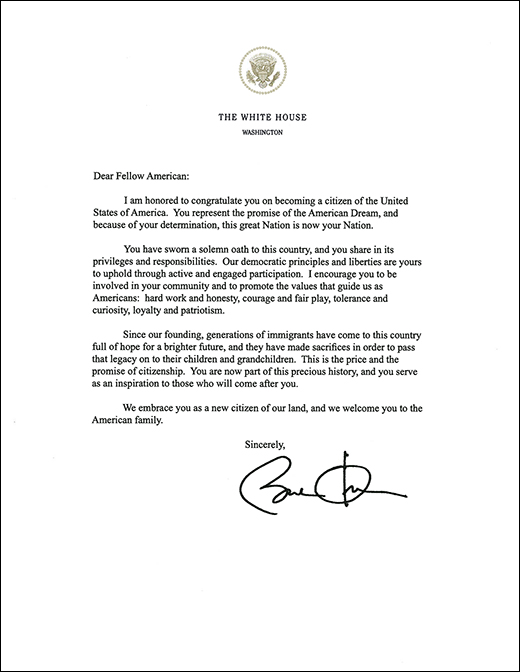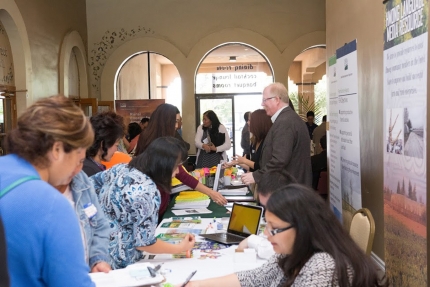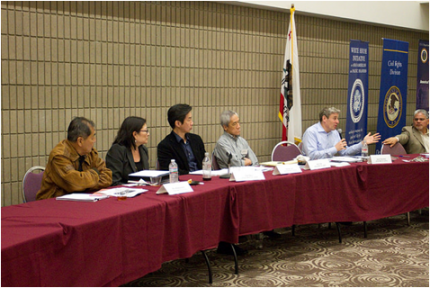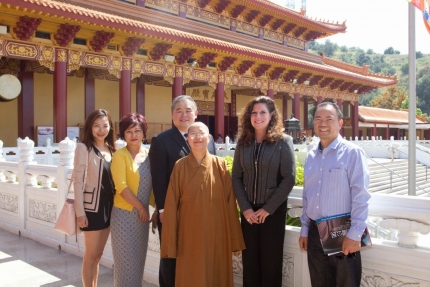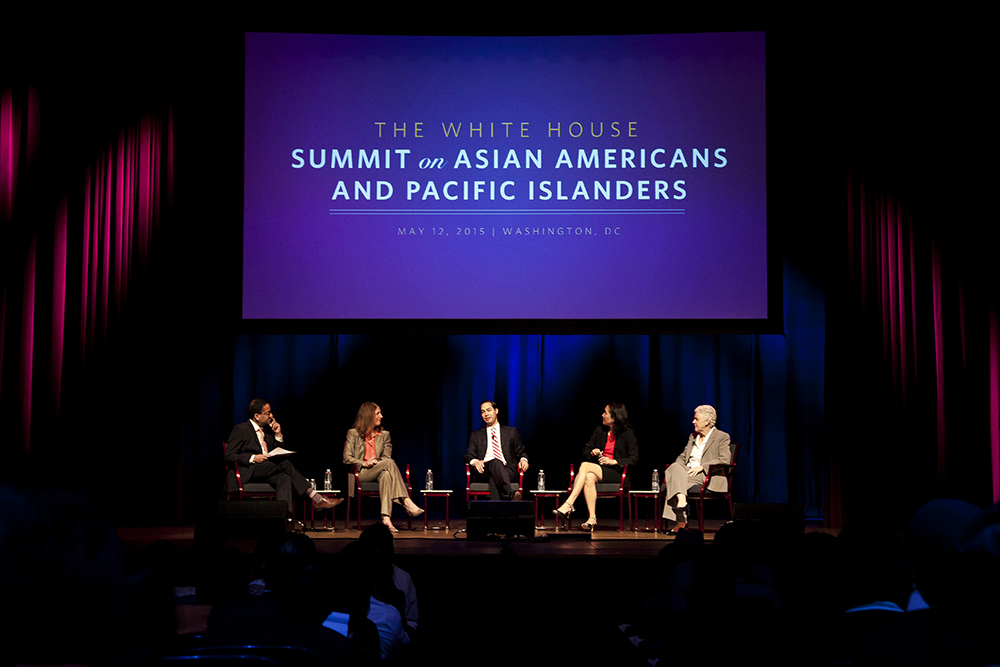Initiative on Asian Americans and Pacific Islanders Blog
My Day One: September 6, 2012
Posted by on June 1, 2015 at 2:11 PM EDTEd. note: This is cross-posted on the White House Blog. Read the original post here.
June marks Immigrant Heritage Month -- and people across the country are sharing their American stories. Whether you've recently embarked on your first day as an American or want to share how your ancestors came to arrive here, we want to hear from you. Add your voice to the conversation today.
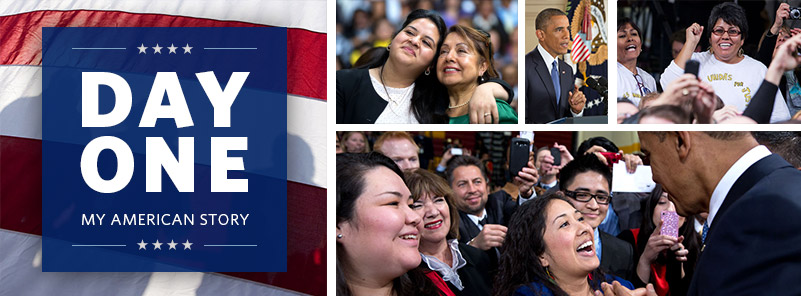
September 6, 2012 was my first day as a citizen of the United States of America.
I raised my hand, took the oath of allegiance, and the United States officially became my country that day.
At the naturalization ceremony, I received the following letter from the President of the United States:
Reading that letter was special, and it has remained with me ever since. It was 10 years in the making.
Similar to many other immigrants, my family traveled a relatively long path to citizenship. In 2002, we moved from Lahore, Pakistan to Austin, Texas in order to pursue our American Dream.
Along the way – first as visitors, then as legal permanent residents, and ultimately as citizens – there were celebrations and milestones; events that collectively shaped my story as an American.
As part of Immigrant Heritage Month, I was asked here to reflect on my first day in America. Instead of focusing only on that first day, I ended up looking back at the entire story – opportunities, events, and milestones that built upon that first day when I came to the U.S. in 2002.
Here is a personal collection of some of these days.
Learn more aboutCalifornia Shines Light on the Asian American and Pacific Islander Farming Community
Posted by on May 30, 2015 at 12:23 PM EDTIt began with a simple idea to raise awareness about the unmet nutritional needs of the Asian American and Pacific Islander (AAPI) community and the economic challenges of AAPI farmers. In 2014, the Asian Pacific Islander Obesity Prevention Alliance (APIOPA) submitted a proposal to bring vital AAPI agricultural issues to light, as part of the White House Initiative on AAPIs’ Proposal Challenge. The Initiative selected APIOPA for its vision to encourage community groups and federal agencies to address food insecurity and economic development within the AAPI community by bringing fresh and healthy produce through Community-Supported Agriculture (CSAs). They continue to work diligently to promote and establish CSAs, a model allowing farmers to sell their produce directly from small AAPI farms to local consumers.
As part of this effort to bring information of federal programs to AAPI farmers, the Initiative has collaborated with the U.S. Department of Agriculture (USDA) to improve access to USDA funding programs and grants. This strategy targets the economic stressors that many farmers face, providing targeted assistance for farmers to help expand their business. On April 30, the Initiative and USDA, along with state and federal agencies, met with over 200 farmers for the National Hmong American Farmers Conference in Fresno, California. Farmers at the conference engaged in direct dialog with government officials and gave testimonies that showcased their triumphs. The event fostered the sharing of diverse ideas and strengthening of cultural unity. The Initiative’s Regional Network’s partners from the U.S. Department of Housing and Urban Development, U.S. Department of Labor, U.S. Small Business Association, and USDA’s Animal and Plant Health Inspection Service, along with state agencies from the Farm Service Agency and Food and Nutrition Service, came to help educate and provide assistance to attendees. The University of California Cooperative Extension also shared delicious and culturally diverse recipes and nutritional information through their SNAP-Ed program.
Learn more aboutConnecting Asian Americans and Pacific Islanders to the White House Conference on Aging
Posted by on May 29, 2015 at 4:16 PM EDTAs May is both Asian American and Pacific Islander (AAPI) Heritage Month and Older Americans Month, we recognize that AAPIs are one of the fastest growing populations of older adults in the United States. AAPIs aged 55 years and older make up about 4 percent of the total older adult U.S. population, and about 20 percent of the total AAPI population.
Spending the am in Seattle at ACRS w/ @WhiteHouseAAPI doing hip hop and tai chi #WHCOA pic.twitter.com/FYdlU7mO3c
— WH Conf on Aging (@WHAging) April 1, 2015
Learn more about Seniors and Social SecuritySpeaking Up for Vulnerable AAPI Workers
Posted by on May 28, 2015 at 9:55 AM EDTEd. note: This is cross-posted on the U.S. Department of Labor's blog. See the original post here.
Every May we celebrate the contributions of Asian-Americans and Pacific Islanders in building a better, stronger, more vibrant America. As the fastest growing ethnic population in the U.S., AAPIs are also playing an important role in the nation’s economy — from Filipino health care workers to Korean grocers to South Asian taxi drivers to Vietnamese nail salon workers. Unfortunately, many AAPI workers are also some of our most vulnerable workers.
A Gallup poll highlighted a troubling statistic — that nearly 30 percent of AAPI workers have reported being victims of employment discrimination. Recognizing that AAPI workers face exploitation, but are among the least likely to assist government assistance, the White House initiative on Asian-Americans and Pacific Islanders — WHIAAPI — along with an interagency working group launched the Vulnerable Worker Project to seek out and hear directly from AAPI workers about the challenges they face in the workplace.
USCIS Provides Chinese Language Immigration Presentation at Famous Buddhist Temple in California
Posted by on May 28, 2015 at 9:49 AM EDTEd. note: This is cross-posted on the U.S. Citizenship and Immigration Services' blog. See the original post here.
Reaching out to immigrants and future citizens is one of the most important things we do. As a part of an ongoing outreach program, U.S. Citizenship and Immigration Services (USCIS) provides information to immigrants in a variety of languages, including at in-person community events.
One such event took place this past Sunday, April 19, at the Hsi Lai Temple in Hacienda Heights, California, not far from Los Angeles. USCIS officers made a presentation, primarily in Mandarin Chinese, on immigration basics and the process of becoming a citizen, including how to prepare for the naturalization test.
Learn more about ImmigrationA Historic Gathering: The White House Summit on Asian Americans and Pacific Islanders
Posted by on May 14, 2015 at 6:19 PM EDTView more photos from this week's summit here.
This week, on May 12, the White House Initiative on Asian Americans and Pacific Islanders hosted the first-ever White House Summit on Asian Americans and Pacific Islanders in Washington, DC. Nearly 2,000 community members, federal officials, and guests from over 40 states and the Pacific Islands came together to connect with one other, share their experiences and stories, and gain tools to mobilize their communities to continue expanding opportunity for AAPIs everywhere.
Summit selfie with 1,500 of our friends from 40 different states! #AAPISummit pic.twitter.com/FyCJhw7IAD
— White House AAPI (@WhiteHouseAAPI) May 12, 2015
- &lsaquo previous
- 1
- 2
- 3
- 4
- 5
- 6
- 7
- 8
- 9
- …
- next &rsaquo
White House Blogs
- The White House Blog
- Middle Class Task Force
- Council of Economic Advisers
- Council on Environmental Quality
- Council on Women and Girls
- Office of Intergovernmental Affairs
- Office of Management and Budget
- Office of Public Engagement
- Office of Science & Tech Policy
- Office of Urban Affairs
- Open Government
- Faith and Neighborhood Partnerships
- Social Innovation and Civic Participation
- US Trade Representative
- Office National Drug Control Policy
categories
- AIDS Policy
- Alaska
- Blueprint for an America Built to Last
- Budget
- Civil Rights
- Defense
- Disabilities
- Economy
- Education
- Energy and Environment
- Equal Pay
- Ethics
- Faith Based
- Fiscal Responsibility
- Foreign Policy
- Grab Bag
- Health Care
- Homeland Security
- Immigration
- Innovation Fellows
- Inside the White House
- Middle Class Security
- Open Government
- Poverty
- Rural
- Seniors and Social Security
- Service
- Social Innovation
- State of the Union
- Taxes
- Technology
- Urban Policy
- Veterans
- Violence Prevention
- White House Internships
- Women
- Working Families
- Additional Issues
